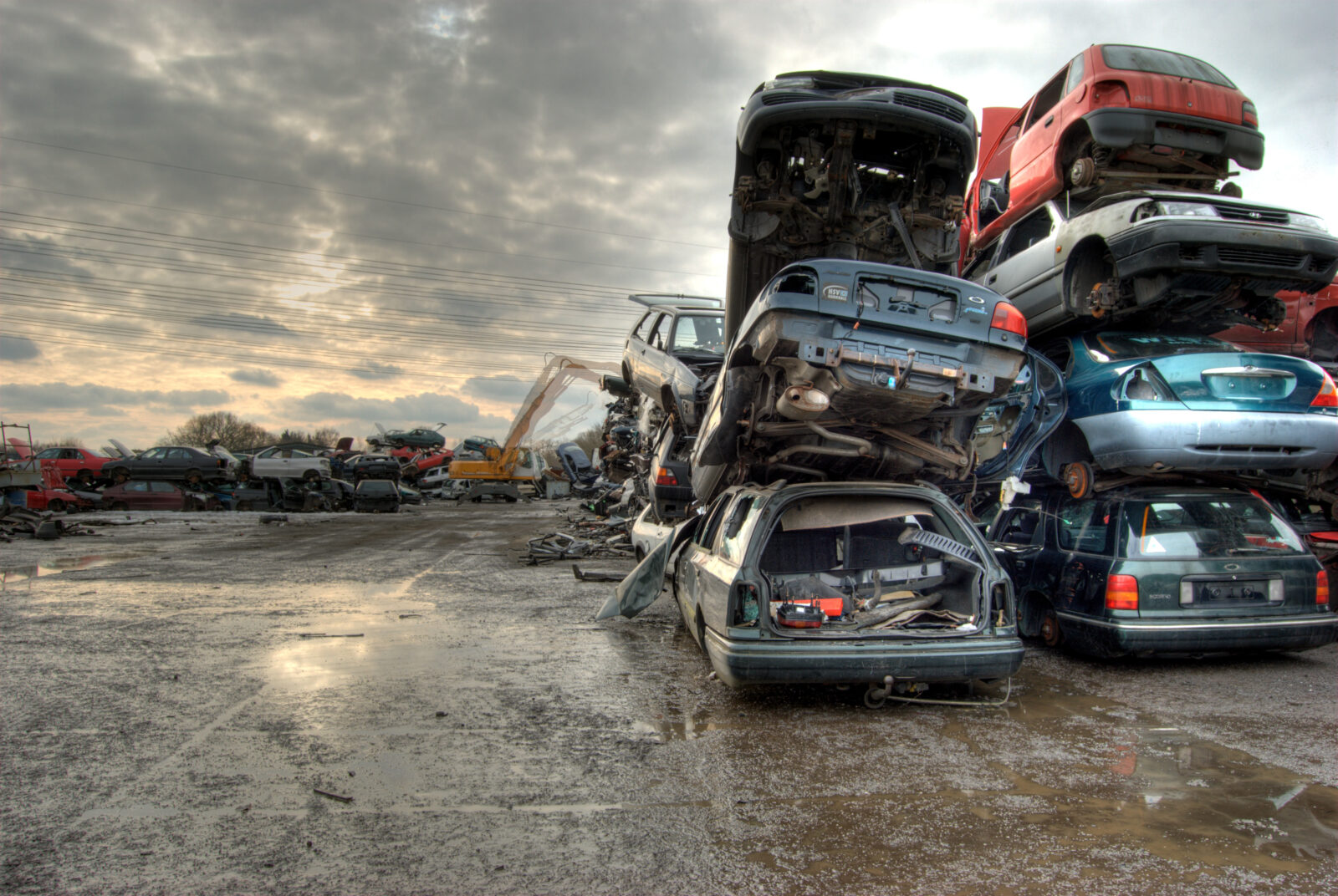We need an ELV law, now

For the longest time, perhaps since the history of automobiles began, we’ve been looking at cars from just one perspective: The POV of the brand new. Today, this crazy, runaway global market that we call the auto industry constantly seeks to set bigger and loftier numbers when it comes to sales targets for new cars. The wizards over at R&D have so bedazzled us with their magic, and the marketing departments have kept our eyes glued to the show, that we fail to see the backstage, the backlot of this theater, and it’s strewn with the rotting corpses of the obsolete, the outdated, abandoned, and ill-fated.
We’ve been blinded by the glitter and flash of the newborns, to the point that we fail to see the graveyards encroaching upon our living spaces.
Each year, it is estimated that more than 50 million vehicles reach the end of their service life throughout the world, according to the Implementing Sustainable Low and Non-Chemical Developing States (Islands) Program, whose platform gefislands.org supports 33 island nations in the Atlantic, Caribbean, Indian and Pacific regions to improve chemicals and waste management. These are called end-of-life vehicles, or ELVs, and their increasing numbers throughout the world should be a cause of concern for everyone.
But wait, don’t these vehicles, which already do not run, pose no threat to society anymore? Well, on the contrary, the moment cars are assembled and made, they’re already making an impact on the environment, even when they reach that stage when they’re not being used. ELVs contain hazardous components such as lead batteries, refrigerant gases, mercury and mechanical oils. They also contain persistent organic pollutants (POPs) in the form of decaBDE and other brominated flame retardants in the textiles and foams used in artificial leather for seat covers and interior lining, as well as added to hard plastics, electronic parts, cable casings, shrink plastics, tapes, and other vehicular components.
According to the Islands Program experts, without proper dismantling and treatment of hazardous components, ELVs may cause soil and groundwater pollution. If they’re burned in the open, POPs (toxins and furans) are also released into the atmosphere. To prevent this from happening, all components containing POPs and other hazardous components must be removed from ELVs before they are recycled, compressed or crushed.
In Japan, whenever you buy a car, besides paying for the registration, you will also have to pay a certain amount for the recycling fee. This fee goes to Japan Automobile Recycling Promotion Center, or JARC. JARC is a foundation created in 2000 jointly by various auto industry organizations with a mission to advance the recycling of ELVs.
Under the country’s Automobile Recycling Law implemented since 2005, vehicle owners are required to pay a recycling fee in advance and demand the auto makers, dealers, dismantlers and other stakeholders to play their respective roles in the nationwide recycling system. JARC’s major responsibility is to manage the recycling fees deposited by vehicle owners and to monitor the flow of ELVs in the automotive recycling system in order to make sure that everyone involved is doing their part. According to JARC, about 80 percent of each ELV (in weight) is recycled into reusable parts or reprocessed materials.
For context, Japan’s number of registered vehicles has been averaging 44,523,586 units (based on 79 observations by CEIC Data from 1945 to 2023). In comparison, the Philippines surpassed 5.4 million units by 2022, an increase of nearly 500,000 units compared to the same period of the previous year, according to online publication Asian Automotive Analysis. By vehicle type, although trucks and trailers declined, MUVs (multi-utility vehicles) rose to 2.58 million, and SUVs to 965,000, becoming the main drivers of the overall market. Passenger cars and buses increased as well, going up to 1.31 million and 33,000, respectively. Meanwhile motorcycle and tricycle ownership expanded to 8.42 million and 44,000, respectively. The vehicle ownership rate was 48 units for every 1,000 people for automobiles and 75 units per 1,000 people for motorcycles and tricycles.
Lacking a law
Now that we know why the proper storage, handling, dismantling and recycling of ELVs is important, we must now address the elephant in the room. Where’s the government in all this?
During my interview with John Hung, chief financial officer of En Tsumugi, the first global standard ELV dismantler in the Philippines that’s also endorsed by Toyota, he confirmed that the number one issue is “the regulatory backup” from the government.
“At the moment, the Philippines is lacking an ELV law. Unlike in developed countries like Japan, they’ve already addressed these problems and they have regulations addressing ELVs. That’s what we’re trying to encourage also. By launching this En Tsumugi facility, we are also showing our friends in the government we really need their help, we from the private sector, project sector from Japan, we will be showing everybody that the Japanese government is very supportive of this project. I think the major problem is deregulation. We still lack the knowledge, understanding,” said Hung.
En Tsumugi, located in in Mexico, Pampanga, is the first-ever Japan-standard ELV dismantling facility in the Philippines, which is a result of a pilot project led by Japanese ELV dismantler Tsuruoka Co. Ltd., financially supported by Japan International Cooperation Agency (JICA) and supported by Toyota Motor Corp. and Mitsui & Co. Ltd., which provided business development and technical assistance.
JICA Chief Representative Sakamoto Takema stressed “the importance of more solid legal systems” to sustain the stable collection of ELVs in a legitimate manner.
“This would include ELV-related policies and regulatory frameworks for proper implementation and monitoring,” said Takema.
Toyota Motor Philippines (TMP) president Masando Hashimoto said: “TMP produces 60,000 and sells 200,000 vehicles in a year. Our Unit-In-Operation (UIO) has reached an incredible 1.2 million. As the largest automotive brand, Toyota is not only responsible for making and selling cars, but also for recycling them.”
And we better craft an appropriate law for ELVs soon. It’s not just because the rest of our Southeast Asian neighbors are already a few steps ahead in this regard (Vietnam already has a law in place, and so will Malaysia by next year), but more importantly, our own well-being and the well-being of our environment are at stake here.


















